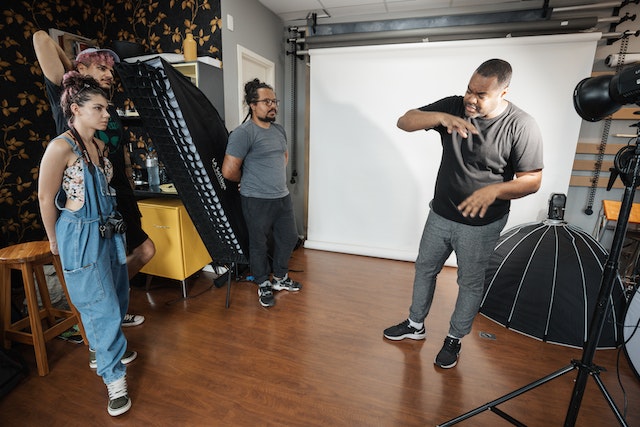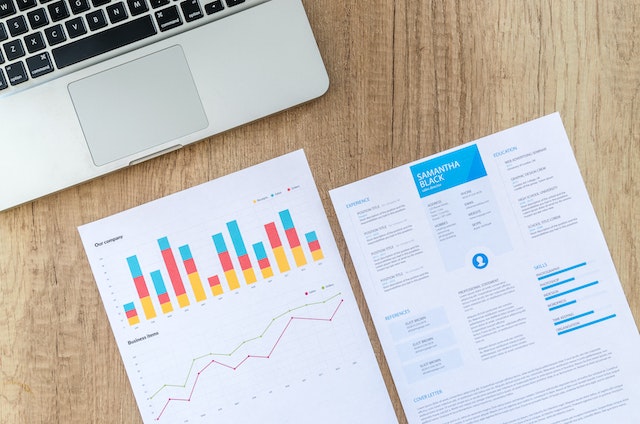Did you know that 4 out of 5 people who read this post will improve their command of broadcast PR?
You shouldn’t – we made it up.
But it’s an example of a strong ‘news hook’: something that will help your story stand out from the hundreds of others being pitched out every day.
This news hook is even more important when it comes to broadcast PR, as the opportunities for coverage are both smaller and more ephemeral – meaning your story must be unique and interesting enough to beat the hundreds of other trending news stories being pitched each day by competitors.
Creating new broadcast research is an effective way to generate an interesting news angle, and the best way to do this is through dedicated surveys. While many brands may have the same idea, there are some easy ways to ensure yours cuts through the noise and makes it more than ‘just another survey’.
What is the purpose of a survey for securing broadcast coverage?

The concept behind surveys is simple. By generating research questions to send out to consumers, you’ll gain information that supports the creation of ‘new’ news, and a story which the target audience will be interested in.
When it comes to creating your survey, it’s critical that you nail the creative idea behind it. To secure valuable coverage, your survey findings need to demonstrate a strong news hook, providing information that is both objective and credible.
Using broadcast research within a broader PR and marketing campaign is hugely beneficial if done right and helps to make a client’s story more relevant to the news agenda.
How To Create a Survey?

The process behind creating a survey is as follows:
- Decide on the key messages behind the campaign
- Identify the target audience (i.e., who does the brand what to reach out to, and which media outlets will be targeted?)
- Draft the ideal headline (i.e., your news hook) – this is probably the most important part of a PR survey. It will lead the story and needs to instantly grab journalists’ attention
- Work backwards to identify the questions that will lead to this title – it should be something new, different, or surprising. Quirky questions are a good way to get quirky answers.
- Form specialist research questions considering the key messages, as well as forming questions which can provide us with statistics and headlines that would be relevant to the story
- Work with a partnering research company to send the research out to a minimum of 1,000 consumers (who will be chosen based on the target audience of the campaign)
- Analyse the results, and pick out key top lines which could form the headline
- Create specialist broadcast content which uses the findings, focusing on the most exciting statistics that are likely to be interesting for both the broadcasters and the target audience
Tips and Tricks for Creating a Compelling Survey
1. Sample Size & Group

If you want your research to be taken seriously by broadcast journalists, you need to ensure that your survey has a solid sample size. The number we’ve stated above – 1,000 people – is the minimum that the BBC requires, but the more the merrier!
Also bear in mind the quality of your sample group: if you’ve managed to interview 100 managing directors regarding business insights, that will be much more valuable than polling 1000 members of the public on an online platform. In short, robust sample sizes depend on the audience you are talking to.
2. Consult a Research Company
If you’re able to, then it’s definitely worth using a credible research company. If a journalist has heard of the company, it’s more likely that they will notice your research, and deem it as being from a reputable and credible source.
3. Plan your Survey Title
When it comes to planning your title, consider why someone might be drawn to click on an article based on your survey – this may require some lateral thought! For example, a plumbing company might conduct a survey to discover which songs are the most popular to sing in the shower. Whilst this doesn’t have a direct correlation to the service itself, it’s both interesting and universal enough to have widespread appeal to a more general audience.
4. Hook with a Contrary Perspective & Trending News

If you can, highlight any statistics that offer a contrary perspective to the norm. If there’s a general stereotype about a specific issue, demographic, or behaviour, it’s beneficial if your data subverts that perception. For example, if there’s a preconception that young people spend the most time on social media, an interesting title would suggest that it’s older people who spend the most time on Facebook.
It helps to be on the ball when it comes to trending news stories, as you might be able to piggyback off these to give your survey a hook. Likewise, use national holidays (such as Christmas, Easter, and Valentine’s Day) to create timely surveys, as well as ‘awareness days’ such as National Cat Day.
5. Get an Expert Commentary
When you have your survey results back and have ascertained the most noteworthy statistics, it helps if you can then source an authority within the industry that is able to provide expert commentary on your findings. Whether it’s a dog behavioural expert talking about the most popular puppy breeds, or a personal trainer discussing new exercise regimes, these experts will provide credibility to your research.
6. Use Case Studies
Sourcing or requesting case studies will help to strengthen your argument, and can be offered up to the broadcast media, alongside the relevant spokesperson for the brand. With this in mind, try to do the groundwork early on to ensure a strong news line, and access to any potential case studies.
How to Use The Data from a Survey?
A well-designed survey is likely to result in a wealth of interesting data. While it can be tempting to include all of this within a press release, it is much more effective to use only the most relevant and newsworthy stats to back up your story.
Consider how the data can be repurposed for different channels; for example, creating eye-catching infographics for social media channels, companion blog posts, or even a white paper – find out more about link building techniques using data.
Another interesting way to play around with your data is to segment the results, discovering new statistics that you might not have expected. You might split your data into gender, location, and age segments, breaking down your results further to reveal new insights.
For example, if you conducted a survey about Christmas spending habits, you might find that men spend more time choosing gifts than women; this would be an interesting title as it subverts gender stereotypes. See this press release example also referring to gender:
Meanwhile, location-specific results could be of more interest to the regional press. For example, the same survey might demonstrate that men from Cornwall are the most thoughtful (due to taking the most time when selecting a Christmas gift), or that people from one region are more likely to buy certain gifts (reflecting differences in taste).
Things to Avoid When Creating a Survey

Try to avoid making your research too much of a plug. As much as you can, find something interesting within your industry, and not just something that supports your products.
For example, people are unlikely to believe research saying foam mattresses are dangerous if it is commissioned by a manufacturer of pocket spring mattresses. It’s better to conduct research as an authority within your industry, rather than using it to undermine others.
Be careful not to ‘cherry pick’ the results you want from the data, either. While it may be tempting to ignore certain things in order to reinforce your hook, you don’t want to be caught short from having skewed the results, and find yourself defending your story!
The best way to avoid unwanted data is to tailor your questions, so that you get the most compelling results back. If your question yields the information that ‘9 out of 10 people would work longer days for a shorter week’, that’s going to be more compelling than ‘45% of people like to travel by train, while 55% prefer the car’. The worst outcome from a survey is to receive a ‘so what, who cares?’ response from the target audience – remember, you’re looking for that interesting angle!
While PR surveys do require careful planning and execution, they are a great way to secure broadcast coverage for a brand. Done well, they can create compelling news hooks, add real depth and insight to a story, and boost your chances of securing great coverage – giving you a crucial edge in a fast-moving media landscape.
Author Bio: Broadcast Revolution is a specialist broadcast PR agency providing a fresh and creative way to deliver quality coverage for brands. The specialised expert team creates authentic content that focuses on quality rather than quantity. Services include talent sourcing, media relations, video and podcast production, media training, and much more.






[…] collect data, so they can learn what their customers want or expect from those businesses. Once you collect data for your business, you could analyze it and understand your customers. After all, if you only collect the data and […]
[…] Customer surveys are a method of collecting consumer feedback, which can be gathered through customer questionnaires. They assist your firm in gauging client happiness, assessing consumer engagement, conducting market research, and assessing expectations. Responding to these questions will give you a better understanding of what excites, motivates, and irritates your clients to improve your customer service. […]
[…] Sending a survey through email is a great way to gather customer feedback, which allows you to respond and make changes where needed. With email, you can also send follow-up emails that enable you to keep the conversation going as you learn more about each customer. […]
Comments are closed.